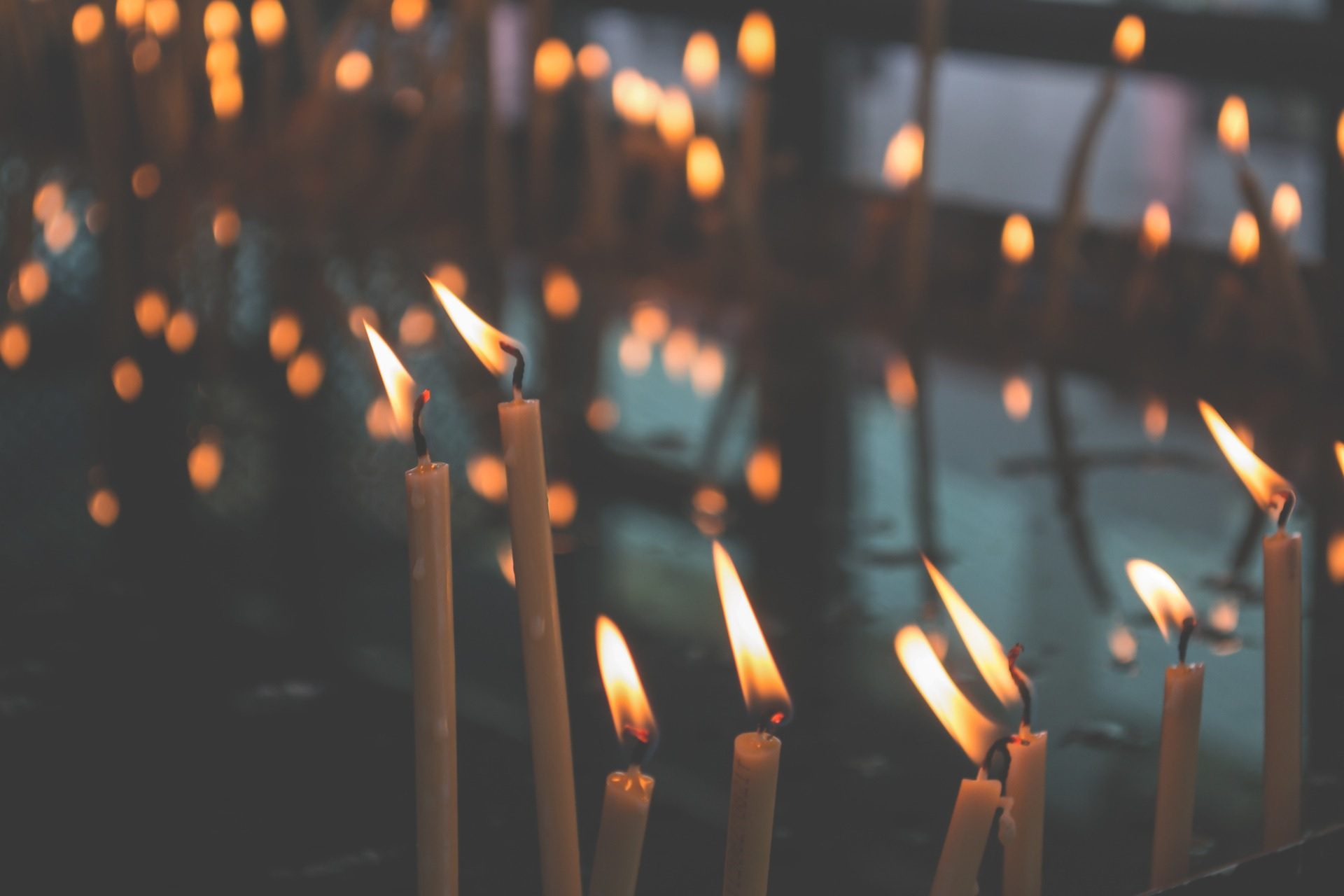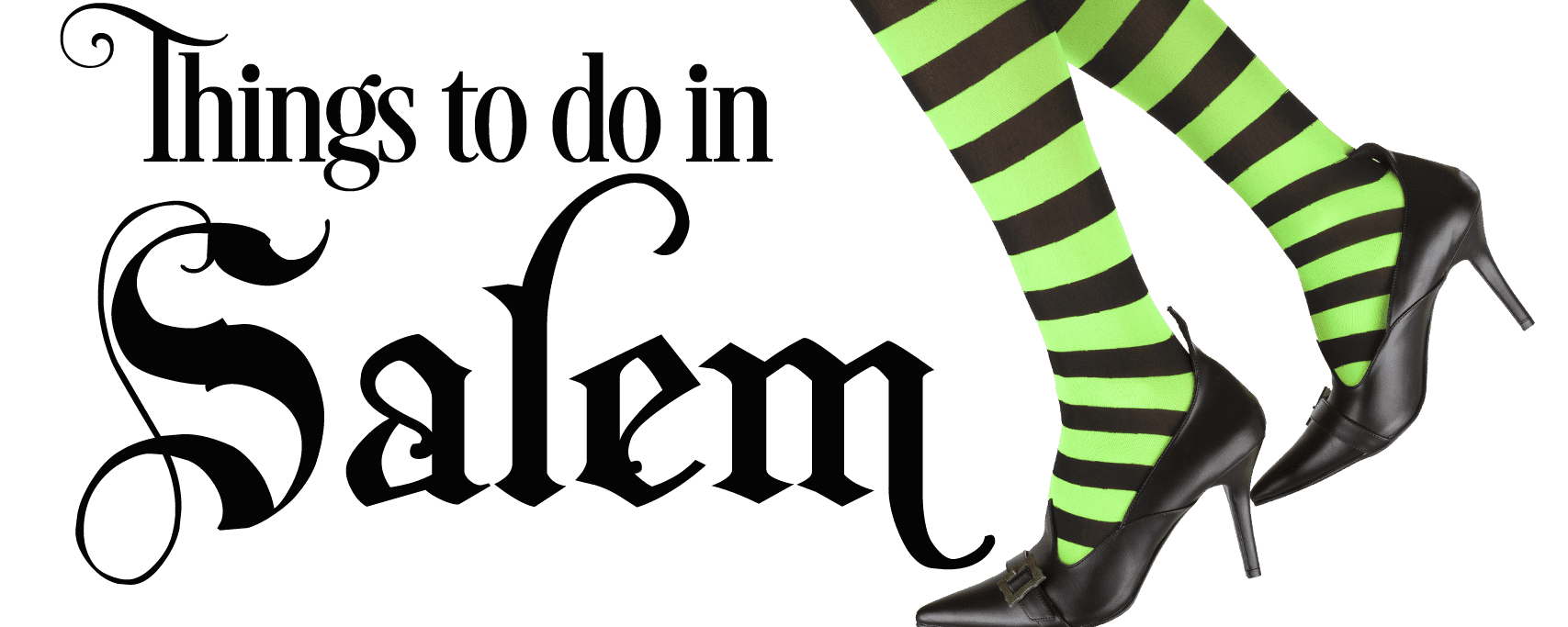

Happy Halloween!!! Oh my goodness you guys it’s here. I am so excited, and if you are too, be sure to follow my Instagram to see Halloween shenanigans around Salem.
Meanwhile, I reached out to the truly awesome Jessi Huntenburg because I do regularly get questions from you guys about what “all of this witch stuff around Salem” is all about. Not the witch trials, but actual Wicca, Paganism, Witchcraft, etc. I have been following Jessi on social media for quite a while now and I have also purchased a tarot reading from her which was very insightful and on point, so if you’re curious I definitely suggest checking her out. Anyways, about a week ago I e-mailed her asking if she would be interested in talking about modern witchcraft here on my blog, going over what some of those words mean to her and apply to her. What she wrote is AMAZING and I hope you guys like it. I think she did a fantastic job explaining from a historical as well as modern angle. Check her out on Facebook, Instagram, YouTube and at her website here.
Just as a quick note…I know these words can mean different things to different people. There is no one “right way” to practice and everyone has their own opinion or process which is valid and true for them. To go into every single historical or modern path one could take would literally take forever to cover.
You all as my readers are largely super respectful and wonderful which I am grateful for. Please keep any and all comments polite. Anything rude or aiming to diminish or shame someone’s beliefs will be removed. <3
The Life and Times of the Modern Witch
By Jessi Huntenburg
“I want to begin by saying that I’m hardly qualified to define what a witch is—to do so would require a near infinite repository of knowledge on the subject and extensive residencies in places and cultures that transcend time. Sad as I am to report that I have neither of those things, I do have practical witchcraft experience and an internet platform or two that I use to speak about those experiences. I also have a healthy respect for the fact that who I am as a witch represents a microscopically small facet of witchcraft in general as well as an understanding that what the craft is shifts from moment to moment. I make no claims to speak for all witches, for to do so would be impossible, and anyone who makes such a claim is blowing some serious smoke!
What I can offer you is a glimpse into what it means to be a modern witch—one who lives and practices in the internet age. It’s safe to say that witchcraft is having a “moment,” and in no small part is this due to the current socio-political climate. Through protest and social media platforms, witches have thrust their way into the mainstream and made it possible for anyone curious and willing to dabble with the craft. And as a modern witch I wholeheartedly encourage this—if it harms none, do as you will.
An (Absurdly) Brief History of Witchcraft
Cross-culturally and historically speaking, witchcraft is the practice of creating and administering herbal remedies and manipulating energies. In the West, we refer to the this as the “wise woman” tradition—one that involves learning the various healing properties (both physical and metaphysical) of herbs and using that knowledge to concoct remedies for various ailments. These folk remedies treat conditions as benign as insomnia or as serious as spiritual possession. Before modern medicine and psychology, melancholy and mood changes were often seen as symptoms of spiritual hijinks or curses, and those suffering these symptoms would be taken to the local witch who would therefore perform a healing ritual and offer some method or prescription for expelling the evil entity. The power of words wasn’t lost on these healers—they often spoke incantations over the afflicted to help speed the process of healing. In modern parlance, we refer to these incantations as spells, and the tradition of spellcrafting is one of the few that nearly all witches share in common today.
The village healer, witch, bruja, shaman, strega, and witch doctor existed in nearly every society at one point in time and in one form or another. In the West, the Enlightenment Age gave rise to a new way of treating and thinking about disease, and although folk medicine was largely exchanged for modern medicine, it persisted through local practice and oral tradition.
Shortly before the outbreak of World War Two in Europe, a man by the name of Gerald Gardener was initiated into the New Forest Coven at Millhouse in England. Gardener’s claims that members of this coven could trace their craft back to an ancient lineage were largely debunked, so it’s difficult to say when the coven itself came into being. It can be claimed that Gardener and his associate Doreen Valiente brought witchcraft into the modern age by giving it a name (Wicca), a text (Witchcraft Today), and openly publicizing it until his death in 1964 (Gerald Gardener: Legacy of the “Father of Witchcraft”, Tappenden, www.bbc.com). This legacy was perpetuated in the West by Raymond Buckland through his book The Complete Book of Witchcraft. Likewise, the occultist Aleister Crowley coaxed the magickal and ritualistic aspect of witchcraft into the public eye, offering a practice that was much more secular than the Wicca of Gardener and Buckland.
The Rise of The New Age
Around the time of Gardener’s death, western culture was experiencing a major shift. The free-love, feminist, anti-war, and civil rights movements were paving the way for peace and tolerance, and Eastern spiritual practices found a place in Western culture as a result (thanks in large part to celebrity practitioners such as George Harrison of The Beatles). Yoga, meditation, and mantra recitation flourished on the fringes. The Hindu observance of vegetarianism was also embraced by members of the hippie subculture, and an interest in crystals and chakra points revived a culture of energy healing.
This “new age” culture, as it was called, was dubbed so by astrologers who claimed that the age of Pisces (Jesus) had come to an end and the age of Aquarius had taken its place. Aquarius is “the sign of all things that are newly invented.” It is rebellious, decentralized, creative, communicative, and humanitarian—a perfect sign to welcome a confluence of cultures and beliefs and to usher in the birth of the internet age (Susan Miller).
The Modern Witch: A Product of the New Age and the Old Ways
These are the origins of the modern witch—a blending of the “old ways” of paganism and the practices of the new age and a healthy dose of modern technology. The modern witch is often “eclectic”: they pull from a range of practices and traditions that exist across cultures according to what jives with them (and if they’re socially responsible, they respect the history and practice of these traditions within the context of the original cultures so that they aren’t appropriating them). They work with the energies and correspondences of crystals, herbs, tools, gods, goddesses, the moon, the sun, astrology, and the four directions. Sometimes they wear black, and sometimes they don’t. Sometimes they worship pantheons, and sometimes they don’t. Sometimes they incorporate meditation and astral projection and divination and singing and dancing into their practice, and sometimes they don’t.
The one thing that nearly all of them do, however, is this: create specific and focused intentions and seek to manipulate paradigms or energy in order to manifest those intentions into reality.
A witch respects the changing and shifting nature of the universe, and seeks to shift and change in concert. They have certain things they’d like to do or to have or to accomplish, and they speak these to the universe through spells, incantations, thoughts, ritual, and symbolic practices as a means to focus their efforts towards achieving these goals. Theories on how this “magick” works differ from practitioner to practitioner, but each agrees that it does indeed work and that is why it’s practiced. Witchcraft, essentially, is “practical”: it’s the application of will, intention, effort, and knowledge towards a desired outcome.
Many of these spells involve crystals, candles, herbs, and divinatory materials (like runes, pendulums, and tarot cards) that the practitioner has consecrated (imbued with sacredness or significance). The act of charging a spell (transferring energy to it) and activating a spell (releasing the energy into the universe) differs from practitioner to practitioner depending on the tradition they work from or what works personally for them. Some uber-modern witches create “emoji spells” that they charge and release into the wide digital world of the internet. These same practitioners may also work with some of the most ancient materials as well—the modern witch is not restricted by time, space, age, or tradition.
Although there’s debate within the community about what a witch is or what level of eclecticism is acceptable, the truth remains that witchcraft is evolving and becoming broader and more inclusive. Veneration of the divine feminine and the power of creation and intuition is a hallmark of both ancient and modern witchcraft, and this is evidenced through its connections with feminism and the empowerment of marginalized communities.
Up until this point, the craft has always been on the fringes in one way or another, practiced by the few for the benefit of the many. Like the wise woman and shaman traditions of old, many practitioners offer healing services in the form of spell work, advising, counseling, tarot reading, herbal supplements and holistic healing services. As more turn away from the patriarchal, “top-down” paradigm and welcome a more feminine “bottom-up” paradigm, the services a witch provides are becoming more widely sought out and ever more valuable to a larger community. The recent uptick in alternative and new age health practices may explain this phenomenon—if you’re drinking crystal-charged water and undergoing reiki treatments, consulting a tarot reader doesn’t seem like such a wild idea. And if you’re looking to experiment with a more intuitive, sensate way of being, the witchcraft tradition is a good one to turn to.”
About the author

Jessi Huntenburg is a self-identified witch and professional tarot reader working out of Philadelphia, PA. She approaches tarot through the lens of a soul healer, scholar, and a shadow worker, resulting in readings that speak to the nuanced expression of the human condition. You can find a host of tarot resources, witchy think pieces, and ways to work with her at her website, www.jessihuntenburg.com.
#salem #salemma #thingstodoinsalem #thingstodoinsalemma #thewitchcity #witchcityguide #northshore #salemmass #salemmassachusetts #witchcraft #modernwitchcraft #wicca #paganism #newage #newagespirituality #visitsalem #visitsalemma #jessihuntenburg @JessiHuntenburg
